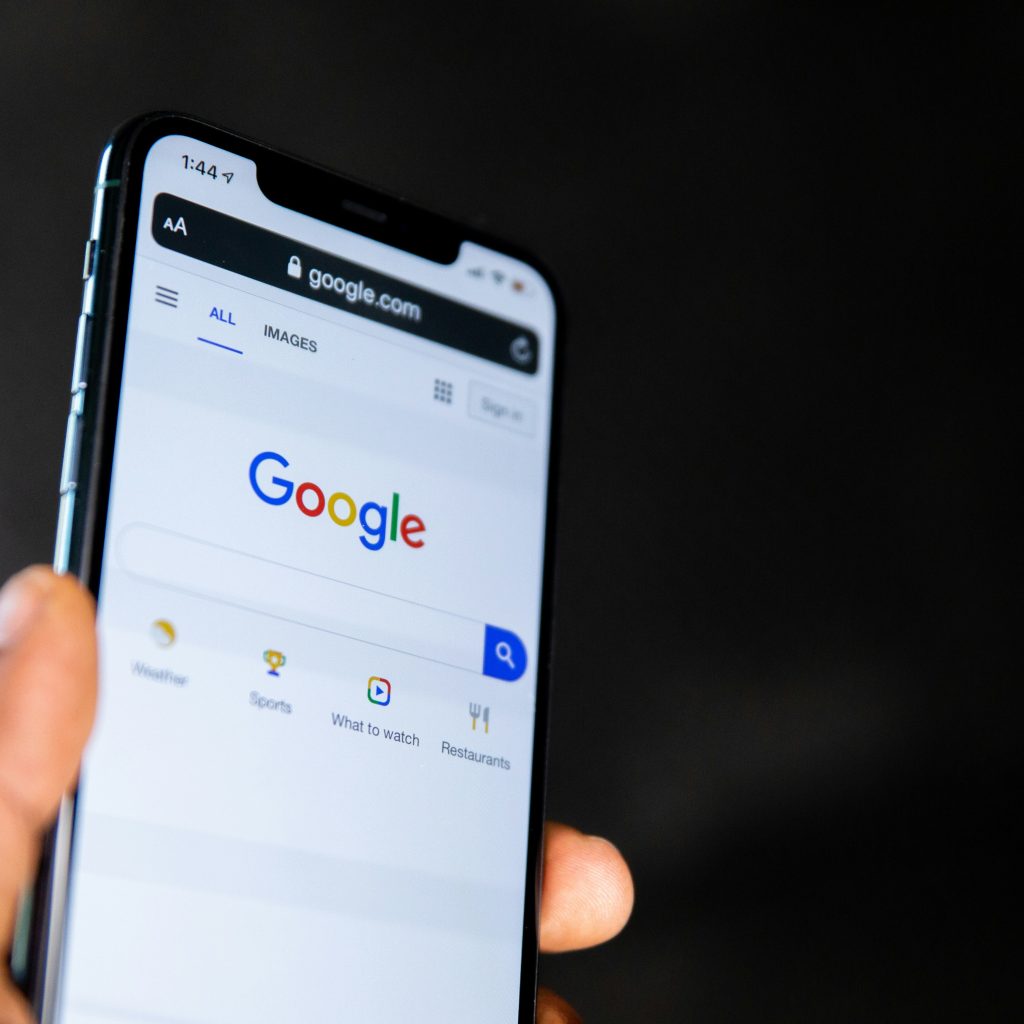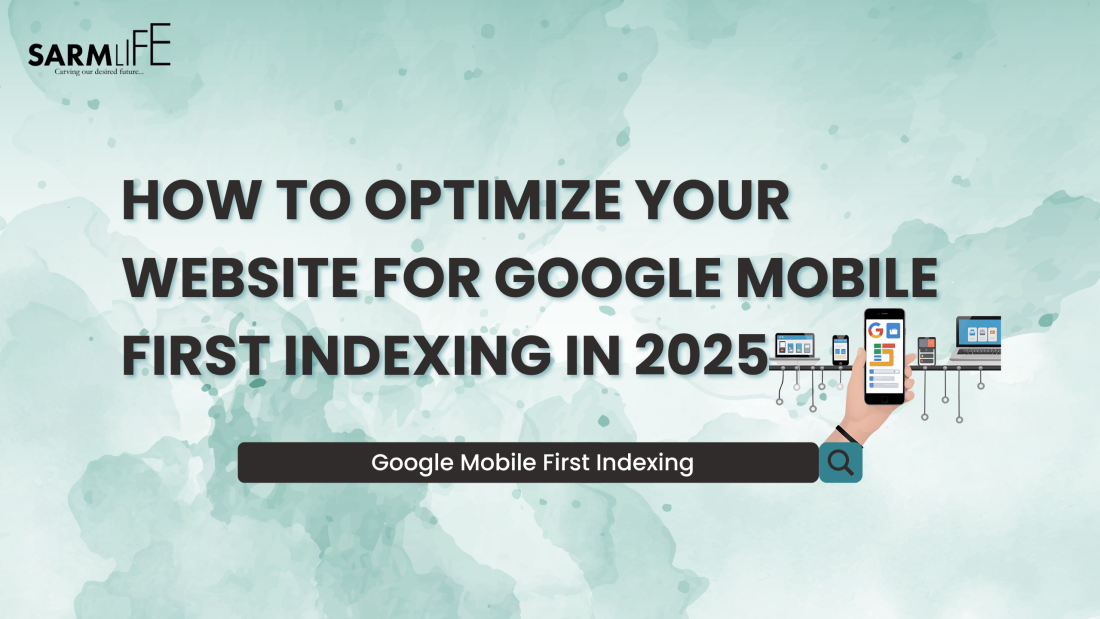In today’s world, smartphones have gone beyond digital communication devices. They are now our hand extensions. Google recognized this fact and made a game-changing decision that changed the SEO landscape for good: mobile first indexing.
Mobile first indexing in SEO is an initiative by Google that primarily uses a website’s mobile version for ranking and indexing. This concept has evolved over the years and continues to grow. The first indication of Google’s involvement in the mobile-first indexing test was in 2016.
Two years after its initial introduction in 2016, Google began rolling out a larger-scale version of the mobile-first indexing initiative.
This action forced many websites to cave. By 2020, more than 70% had migrated to prioritizing mobile versions for ranking purposes.
The 2025 mobile first indexing update allows only websites with excellently optimized mobile versions to rank.
In other words, if the web version of your website does not match the mobile version or lacks one, your content will not rank, regardless of how optimized that content is.
Hence, if you have wondered why your fully optimized content does not rank, you may have a mobile-first indexing problem. This article will examine Google’s mobile first indexing in 2025, its SEO implications, and how to leverage it to remain on Google’s first page in 2025.
Mobile Optimization for SEO: Why It Matters

Photo by Freepik
The evolution of Google’s ranking signals has capped at prioritizing user experience on mobile devices. This means that Google now uses a mobile version lens when criticizing certain SEO elements on your website and content.
For instance, Google understands that more pages are now viewed via mobile devices. Hence, every website needs to prioritize page load speed for mobile users. For Google, why rank them when people don’t wait to see what they’re about?
Mobile usability is another important feature. Your website must have readable content, and its touch target must be excellently optimized.
When the performance of the mobile version of your website is low, critical user behavior data, such as bounce rate and session duration, will drop significantly. In essence, a poorly optimized mobile version of a website will lose users, rank low, and have poor conversion rates.
RELATED BLOG POSTS
- MOBILE SEO BEST PRACTICES TO OPTIMIZE YOUR WEBSITE – SARMLife
- SARMLife SEO TECHNIQUE TO INCREASE WEBSITE TRAFFIC BY 1447.39% IN 10 DAYS
- INTERNAL LINKING FOR SEO – 9 BEST PRACTICES AND TIPS
Key Elements of Mobile Optimization

Photo by Solen Feyissa on Unsplash
Performance is the primary determinant of how visible you will be on Google. The performance of your website’s mobile version goes beyond user experience.
As Google has focused on a mobile-first approach as the ranking standard, be aware that every design decision affects your ranking directly.
Hence, if you want your website to thrive in the mobile first indexing SEO landscape, here are the optimization fundamentals you should master.
1. Responsive Design vs. Dynamic Serving
One of the foremost decisions you will make when optimizing your website for mobile first indexing on Google is how you intend to serve content. Google recommends a responsive design for serving content optimally on your website.
This method utilizes the exact URL and employs CSS to adapt your layout, regardless of the size or type of mobile device.
Using a responsive design on your website when optimizing for mobile first indexing will ensure the site’s functionality and content consistency across devices.
Another mobile-first optimization method you can employ is dynamic serving. This method delivers different, yet suitable, HTML depending on the device from which the user is viewing the site.
Dynamic serving SEO is a good choice. However, this method requires constant maintenance, which can often pose a challenge for search engine optimization (SEO).
2. Page Load Speed and Core Web Vitals
Page load speed is another key factor you must master if you want to achieve good mobile optimization. The average load time for any website on a mobile network is 2.5 seconds.
Any load time higher than that may mean your site has a slow page load speed. Here are ways you can improve your page speed.
- Optimize the images on your website.
- Reduce heavy script usage.
- Minimize the server response times.
- Take advantage of browser caching.
Regarding speed assessment, you will need the Google Core Web Vitals. This mobile-first optimization fundamental is essential, especially for Cumulative Layout Shift (CLS), Largest Contentful Paint (LCP), and First Input Delay (FID).
These metrics directly affect your site’s Google ranking and the performance perception of your users.
3. Touch Navigation and Design
Your mobile-first website should have a smooth and intuitive touch design. Ensure your interactive buttons are not too tiny for fingers to tap on. The generally accepted dimensions are 48 pixels for the height and width of your button icons.
Additionally, ensure your interactive buttons have sufficient space. When clustered, users will have multiple accidental taps, which can be discouraging.
Test toggles, sliders, and dropdown menus on different screen sizes. This testing ensures they function consistently across various devices.
4. Font Size and Readability
Many website owners and developers overlook this fundamental, but that is a risky game to play. No user wants to stay on a website that does not display words clearly or correctly for reading and comprehension.
Hence, prioritize font size and readability when optimizing your website for mobile first indexing. Google does not overlook this factor when ranking your website.
The minimum font size for body text should be 16px. This font size allows readers to view your content without needing to zoom the page. Additionally, ensure that all text is rendered clearly and neatly for smaller screens.
Furthermore, writing articles in blocks of long paragraphs is a bad idea. Doing that makes reading difficult for users, and it gives your page an untidy look. Use short blocks of paragraphs containing at most three lines.
Keep your sentences shorter, use correct headings and subheadings, and you can include features that collapse sections. Enhancing this mobile-first fundamental will improve user experience, especially on devices with smaller screens.
Common Mobile First Indexing SEO Mistakes to Avoid

Photo by Search Engine Land
While optimizing your website for mobile first indexing is good, it is not enough. It is pertinent to note that even fully mobile-optimized site versions can suffer if mistakes are made.
The list below shows common mistakes you can make that may affect your ranking and how to avoid them.
- Blocking CSS or JavaScript: This mistake will stop Googlebot from correctly rendering your site’s mobile version layout. To prevent this mistake, ensure you keep the elements crawlable.
- Intrusive interstitials: Google often penalizes mobile sites with disruptive or intrusive overlays or pop-ups. These elements negatively impact your site’s user experience (UX). Ensure you eliminate or minimize these disruptions.
- Inconsistent content across devices: When your content appears inconsistently on various devices, Google will de-rank your site. Ensure the content on your mobile version is consistent with the web version.
- Slow mobile load speeds: You will lose website users and visitors if your page takes more than 2.5 seconds to load. Minimize your scripts and optimize your images to speed up your mobile load.
- Mismatching structured data: When your schema markup on mobile differs from your desktop version, you will lose rich snippet visibility. The solution to this problem is to maintain the current schema markup.
How SARMLife Helps Businesses Adapt to Mobile-First Indexing

Photo by White Label IQ
SARMLife is your go-to digital company if you want to be at the forefront of mobile-first website transformation. We optimize our clients’ websites to meet Google’s SEO standards, no matter the periodic updates on the search engine’s algorithm.
Our excellent content writing and formatting service gives your website a clear and readable look. If you do not need fresh content but want an improvement in your website rankings, we still have you covered.
Our professional team of SEO experts can transform any poorly performing website into a Google first-page website. We will restructure your website and give it a mobile-first look so it can adapt to any device users are viewing from.
The perfect combination of our technical expertise and strategic insights will keep your website on steroids.
Final Thoughts

Photo by Freepik
Optimizing your website for Google’s mobile first indexing is no longer an option in 2025. It is a necessary choice you must make to stay in the market, no matter your niche.
Google is moving its ranking dependence from websites’ mobile speed, content parity, and usability. Hence, you need a proactive approach to keep your website constantly optimized for mobile use. That is one of the primary ways you will remain visible today.
You need constant audits, strategic mobile optimization structures, and excellently optimized website performance and design.
Regardless of your business size, SARMLife can help you achieve these for a place on Google’s first page within your budget.
Are you ready to do things differently? Let me know in the comments.
READ MORE: 7 PRACTICAL TIPS ON HOW TO WRITE SEO HEADLINES IN 2025


Add a Comment